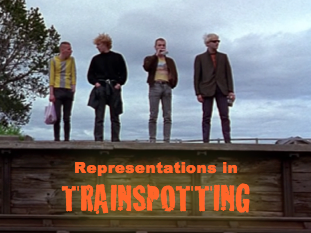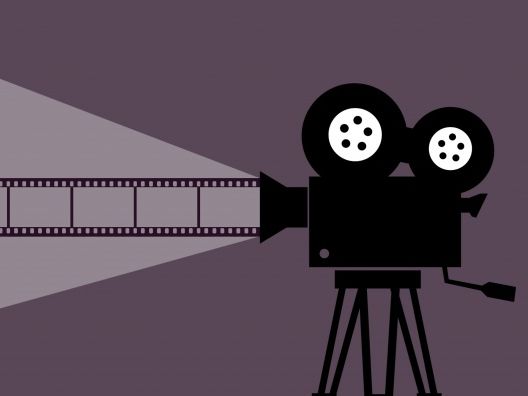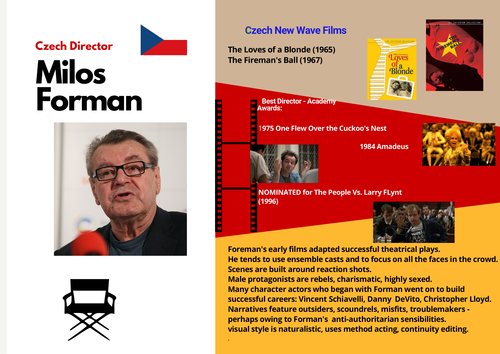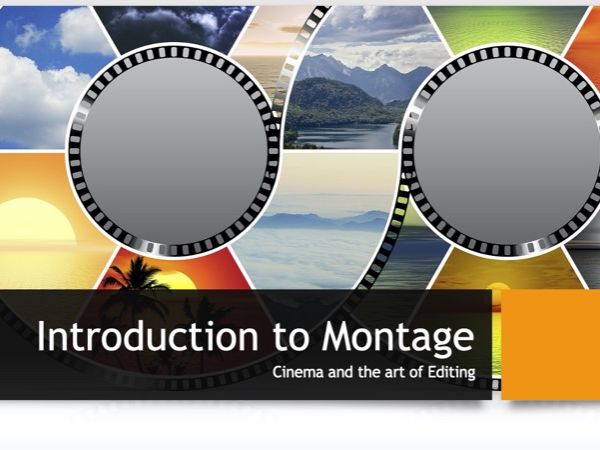57Uploads
12k+Views
2k+Downloads
All resources

REPRESENTATIONS IN *TRAINSPOTTING*
This is a set of notes to help for revision of TRAINSPOTTING for film studies A-Level candidates.
Representations analyzed include:
Nationality
Class
Gender
Age

Post-Screening Discussion Questions - Film Studies - Raise the Red Lantern (1991)
**Raise the Red Lantern **(Dir. Zhang Yimou, 1991, China) is an excellent example of a film that deconstructs how
patriarchal power works and in this sense it is a film that is empowering for women, despite being a narrative *about *
disempowered women.
The film has also been discussed as a metaphor for Chinese state power and therefore also functions a a subversive political commentary.
With beautiful cinematography and composition throughout, this film is also a study in cinematic perfection, with mise-en-scene used to great symbolic effect. The film could be studied just as an excellent example of mise-en-scene.

Spectatorship Test
This 10 question test is a great accompaniment to the Specatatorship PowerPoint Presentation Resource for teaching the EDUQAS A-Level Film Studies Component 1, Section B. Contemporary American Film.
Topics covered include: hypodermic needle theory, active versus passive spectatorship, archetypes, intertextuality, viewing contexts, polysemy and oppositional readings of films.
The test is best used for Year 12 or Year 13 film studies but can also be helpful for Media Studies teachers vis-a-vis spectaorship and ideology.

SUNRISE (FW Murnau, 1927) -- Test
Basic Comprehension questions - Test - for SUNRISE, Eduqas A-Level Film Studies.

Do Documentaries Tell Stories? - starter exercise
This is a quick starter worksheet to get students to begin a discussion on the similarities and differences between documentaries and narrative (fiction) films. They may be surprised how many conventions and techniques overlap. This can help to stimulate discussion of what makes a film a documentary, since documentaries can be harder to distinguish from narrative films than one might think.

Fish Tank (Andrea Arnold, UK, 2009) HOMEWORK QUESTIONS
Useful for the EDUQAS Film A-Level.
12 questions covering representations, class, ideology, narrative and ‘the female gaze’.

What is THE BECHDEL TEST?
A brief explanation of the Bechdel Test and what it measures. The test is widely regarded as a measure of female representation in film, and provides a useful ‘rule’ by which representation of women / girls can be measured.

Milos Forman Auteur Director Poster
This full colour poster outlines Czech-American film director Milos Forman’s key directorial attributes and achievements.
Perfect for the Auteur study question on the Eduqas Film Studies A-Level curriculum.

What is Tolerance?
This exercise provides interactive discussion prompters and tasks that help students to reflect carefully on what they think tolerance really means. It should form the basis for two 1-hour lessons, for secondary students between ages 14 - 18.
The aim is to foster a critical discussion about tolerant societies, and to help students to reflect upon whether there is a distinction between tolerance and cultural/ moral relativism.
How can tolerance be a principled approach that is fair to both individuals and communities?
Is tolerance fair to **all **citizens?
Does a tolerant state promote genuine** intellectual** diversity?
How can a state promote tolerance without becoming an intolerant state, i.e. without promoting censorship of controversial ideas?

Analysing Class representations in TRAINSPOTTING and FISH TANK (Arnold, 2009)
For **FILM STUDIES A-LEVEL **
This class exercise allows students to consider class representations in the 2009 UK independent film Fish Tank.
It will prompt discussion and allow students to think about how a variety of characters are represented.
The objective is for students to fill in their worksheets independently or in pairs, and then for each individual or pair to feedback to the whole group. In this way, a wide range of answers and insights can be explored.
The exercise could fill nearly an entire 1 hour lesson, depending upon the group size.

Winter's Bone - binary analysis
This chart helps to understand how the narrative conflicts in Winter’s Bone are related to different ideological positions, with respect to values such as community versus individual rights, ‘omerta’ versus whistleblowing, and ‘honour’ versus responsibility/ humanity.

Billy Wilder - Auteur Poster
This colourful poster outlines the key ‘signature’ features distinctive of WIlder’s films It makes an attractive classroom display that also provides helpful memory prompts for Eduquas A-Level Film Studies Students who are sitting the Component 1. Exam Paper.

Religious Attitudes to Sex: Christianity & Islam
This full colour 13-slide PowerPoint presentation covers the principle beliefs about sex and its proper context in both the Christian and Islamic faiths.
It provides a good overview for this topic for the GCSE in Religious Studies and works well as a lesson plan if coupled with a revision quiz or practice test question. THe resource ends with two questions that could be used as discussion prompts or retention checks.

Winter's Bone Ideology Graphic
This Graphic provides an overview of the key ideological issues for the film Winter’s Bone. There are other possibilities for the A-Level Film Studies Exam (such as gender or class) but this graphic provides possibly the best understanding of the more subtle political ideologies within the narrative and their contexts than the more ‘identity’ based approach to ideology.
This graphic places the film within its concurrent social and political contexts, and these bear upon how the film will be** ‘de-coded’** (vis. Stuart Hall’s theory) by viewers, depending upon the background knowledge they bring to their viewing experience. Therefore, this resource provides possibilities for** spectatorship issues** as well as ideology.

Covid 19, Change and Technology: THE MACHINE STOPS
E.M. Forster’s 1909 short story about a future dystopia provides an excellent stiumlus to explore many issues that impact young peoples’ lives in 2021.
THE MACHINE STOPS (1909) paints a picture that allows us to reflect on a multitude of topical questions:
how far has technology helped us to advance, individually and socially?
how does technology impact our relationships to our bodies and senses?
how does technology affect our relationship with the natural world?
how do metaphor, irony and allegory work to convey social messages?
how does technology impact our ability to gain knowledge of what is true and to separate fact from fiction?
Forster’s prophetic short story was extremely prescient in its vision of a future society in which people would be confined indoors, socially distanced and isolated even from their closest kin, and in which all connection to people and the world is mediated through a “machine”. What happens when Kuno decides he wants to escape the machine and to live by his own wits?

Cinema and the Art of EDITING
For both film and media studies, this 14-slide full colour, interactive PowerPoint presentation provides a brief introduction to the basics of film editing (montage).
The six elements of an edit are introduced, as well as a discussion of pace, style of editing and parallel editing (cross cutting).
Helpful links to YouTube videos provide illustrative examples of the terminology presented.
The Presentation - along with Q&A and examples - should fill a 1 hour lesson.

New Hollywood of the 1970s PowerPoint Presentation
This is a full color 20-slide presentation with links to helpful film clips as illustrations.
It forms a class lesson for A-Level film Studies or equivalent and gives helpful context for films produced at this exciting, director-led period of of Hollywood cinema.

Trainspotting - Ideologies
For the** EDUQAS Film Studies A Level** Component 1C. British Films, this resource provides a great exam revision preparation lesson. This is a 24 slide PowerPoint including interactive activities that allow students to reflect on ideological meanings and to share their ideas.
The resource is focused on the EDUQAS A Level examination, and includes past questions to guide pupils in how to craft good answers targeted on ideological analysis. Includes key prompts and talking points for ideology and a sample binary analysis.

EDUQAS A Level Film Studies - Gender in Some Like It Hot
This 25 Slide PowerPoint Presentation can be used for an hour long lesson on gender representations in Billy Wilder’s 1959 film ‘Some Like It Hot’. This can be used for the Component 1A. American Film Exam preparation in Film Studies, or it could be useful in AS Film Studies or Media Studies to discuss gender transgression, homoerotic subtext and feminist themes or messages in the film.
The film challenges gender binaries and stereotypes and cleverly uses subtext and indirect or double meanings to get across its progressive messages in subtle ways that would not have alienated 1950’s American audiences.
This is an interactive presentation that ends with a 15 minute exercise.

Understanding Tolerance Presentation
This is a full-color 27 slide interactive PowerPoint presentation. It forms the basis of an assembly or a full two hour lesson (depending upon time taken for class discussion/debate).
It is designed to prompt discussion and debate and to get youngsters thinking for themselves and reflecting on the complexities and problems associated with the concept of ‘tolerance’. It encourages them to actively define tolerance, and to reflect upon their definition, based on careful analysis of real life case studies and examples.
This lesson can be used can be used in an American or British context. It would work with a wide variety of age groups and can help in teaching citizenship, PSHE, RS, or British Values.
It could also work well as a starter exercise for the study of Liberalism (politics).




















